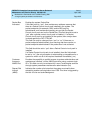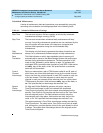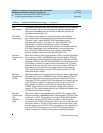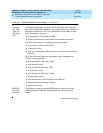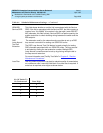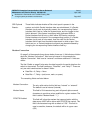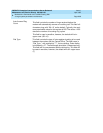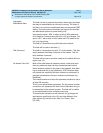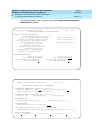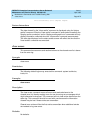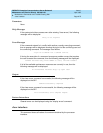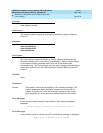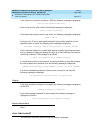
DEFINITY Enterprise Communications Server Release 5
Maintenance and Test for R5vs/si
555-230-123
Issue 1
April 1997
Maintenance Commands and Trouble-Clearing Aids
Page 8-70change system-parameters maintenance
8
Adjustable
Make/Break Ratio
This field can be of particular importance when using a modem
that may be transferable from country to country. The intent of
this field is to control the make/break ratios of pulses and DTMF
dialing. The Intel product information has support for the differ-
ent make/break options for pulse dialing only.
Intel uses the option “&P0” to select a ratio of 39% make and
61% break for communication within the U.S. and Canada. The
option “&P1” sets a ration of 33% make and 67% break for the
U.K. and Hong Kong.
This field is 5 characters long with blank as the default.
This field will be case in-sensitive. ( )
Dial Command
This field is 3 characters long with “D” as the default.. This field
simply denotes the dialing command of the modem. This is a
fairly standard command.
This field will be case in-sensitive; however, the default will be in
upper case. (D)
No Answer Time-Out
Most off-the-shelf external modems provide a timer that aban-
dons any outbound data call after a predetermined interval.
Some modems provide for this timer to be disabled, thus allow-
ing an outbound call to ring indefinitely. AT&T Paradyne does
not provide this capability with their modem line, because it is
generally undesirable to have an outbound call attempt ring
indefinitely.
The internal modem must have this parameter disabled or set to
at least 255 seconds.
This is a non-administrable parameter. For the external modem
connection, this parameter will be the first initialization string to
be transmitted to the external modem. This field will be visible
on the administration form in display mode only.
This hardcoded constant can be overriden for type approval
applications, specifically in the U.K and other Western Euro-
pean nations, by the use of the “Misc. Init. Param:” field.
(S7=255)



